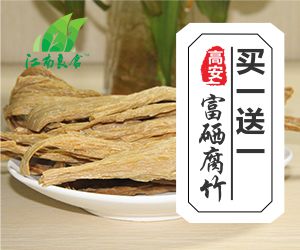Data Include Phase 3 Results Showing that the Primary Endpoint of Spontaneous, Treated Annualized Bleeding Rates During Prophylaxis with Recombinant von Willebrand Factor in Adults with von Willebrand Disease, was Met
12 Abstracts Presented Across Takeda’s Hematology Portfolio and Pipeline Support Takeda’s Commitment to Improving Patient Care Today as well as Transforming Future Care
OSAKA, Japan -- (BUSINESS WIRE) -- Takeda Pharmaceutical Company Limited (TSE: 4502/NYSE:TAK) (“Takeda”) today announced the results of a phase 3 trial investigating the efficacy and safety of recombinant von Willebrand factor (rVWF) prophylaxis,1 one of the 12 abstracts being presented at the International Society on Thrombosis and Haemostasis (ISTH) Virtual Congress 2021. Several of these abstracts explored the use of prophylaxis as part of Takeda’s commitment to improving outcomes for patients with rare bleeding disorders.
The prospective, phase 3, open-label, international multicenter study included 23 patients with severe von Willebrand disease (VWD). The study period was 12 months and included two arms; the prior on-demand (OD) group included patients previously taking OD VWF and the switch group included patients previously taking prophylactic plasma-derived von Willebrand factor (pdVWF) treatment [LPB0128]. Results showed that prophylaxis with rVWF effectively reduced spontaneous, treated annualized bleeding rates (sABRs) in patients previously treated OD, and the same level of hemostatic control was maintained in patients who switched from prophylaxis with pdVWF. The sABR was reduced by 91.5% on study (while receiving prophylactic rVWF) compared with historical sABR in prior OD patients, and sABR was maintained on-study in switch patients (sABR on-study: historical ratio (95% CI): 0.09 (0.02, 0.35) in prior OD arm; 0.55 (0.09, 3.52) in switch arm). No new risks were identified, with no serious adverse events related to rVWF reported.1 The pharmacokinetics (PK) of VWF:ristocetin cofactor (VWF:RCo) and FVIII pharmacodynamics (PD) [PB0917] were also studied and presented at the congress.2
“Stopping a bleed in VWD does not prevent subsequent bleeds, and the complications and unpredictable nature of these bleeds for many OD treated patients can impact their daily life,” commented Dr. Flora Peyvandi, Director of the Angelo Bianchi Bonomi Hemophilia and Thrombosis Center, Fondazione IRCCS Ca’ Granda Ospedale Maggiore, Policlinico, University of Milan, Italy. “These exciting phase 3 results are important in improving understanding about the potential benefit of prophylaxis with rVWF and what this may offer patients with VWD in reducing spontaneous bleeds in the future.”
A literature review being presented at ISTH 2021 also studied the rates of bleeding-related complications, quality of life and healthcare resource utilization in VWD [PB0924].3 Data gathered from a further retrospective cohort study investigating the characteristics and management of patients with VWD in UK general practice discussed the occurrence of bleeding events in patients with a mild disease status [PB0927].4
Additional investigational data across Takeda’s hematology portfolio assessed the efficacy and safety of PK-guided prophylaxis in patients with hemophilia A. Results from the real-world German AHEAD study, which aims to examine long-term effectiveness and safety of antihemophilic factor (recombinant), rAHF (ADVATE),5 help to provide an understanding of the bleeding rates in patients with hemophilia A receiving PK-guided prophylaxis versus standard prophylaxis [PB0509].6 PK-guided prophylaxis was further studied in another real-world analysis using data from the CHESS II database to assess the impact on clinical and health resource utilization outcomes [PB0554].7 Data from a post hoc analysis of the PROPEL phase 3 study on the effects of PK-guided prophylaxis targeting specific FVIII trough levels with rurioctocog alfa pegol (ADYNOVATE) were also presented at the congress [PB0542].8
“At Takeda we are committed to helping make a difference to the lives of patients with rare hematological disorders, both today through our broad portfolio of treatments, and in the future by developing innovative solutions to address unmet needs,” commented Wolfhard Erdlenbruch, MD, Head, Global Medical Affairs Hematology. “The data presented at ISTH 2021 highlights the potential for rVWF to address unmet needs in VWD, as well as helping us to understand the clinical and resource utilization impact when individualizing treatment through PK-guided prophylaxis in hemophilia.”
Also featured at the congress was the phase 3 study design exploring TAK-755, an investigational recombinant ADAMTS13 replacement therapy being studied for use as prophylactic and OD treatment for patients with severe congenital thrombotic thrombocytopenic purpura (cTTP) [PB0837],9 and an abstract which reviewed the clinical burden of TTP [PB0843].10 Improving awareness and understanding around this rare and life-threatening blood disorder associated with ADAMTS13 deficiency,9 together with the development of TAK-755, forms part of Takeda’s commitment to invest in research that has the potential to transform the future care of even more patients affected by rare hematological disorders.
###
About the Phase 3 Recombinant von Willebrand Factor Study
In the prior OD group, subjects initiated rVWF prophylactic treatment with twice-weekly infusions of 50±10 IU/kg per infusion. In the switch group, subjects initiated rVWF prophylactic treatment based on matching (±10%) the weekly dose of their prior pdVWF prophylaxis regimen.
23 enrolled patients received rVWF prophylaxis (prior OD arm: n=13; switch arm: n=10) and 18/23 (78.3%) patients had type 3 VWD. Over the 12-month study period, 11/13 (84.6%) prior OD patients and 7/10 (70.0%) switch patients had a treated, sABR of zero, whereas, historically, 13/13 prior OD and 1/10 switch patients had an sABR >2. Benefit-risk profile was maintained, with no newly identified risks. One adverse event, a headache of moderate severity, was considered possibly related to rVWF by the investigator and led to discontinuation of rVWF and study withdrawal.
About von Willebrand Disease (VWD)
VWD is the most common inherited bleeding disorder, affecting up to one percent of the U.S. population.11 VWD is caused by a deficiency or dysfunction of VWF, one of several types of proteins in the blood that are needed to facilitate proper blood clotting.11 Due to this defect or deficiency in VWF, blood is not able to clot effectively in people with VWD, resulting in prolonged bleeding.11 There is a broad spectrum of disease severity, however, severe bleeding can occur in anyone living with VWD.12
About Hemophilia
Hemophilia is a chronic disease that causes longer-than-normal bleeding due to absent or deficient clotting factor in the blood.13 Hemophilia A is more common than hemophilia B; in 2018, hemophilia A affected about 173,711 people, whereas hemophilia B affected about 34,289 people worldwide.14
People with hemophilia, working closely with their healthcare professionals, can live healthy lives with proper care and adequate treatment.15 Treatment regimens typically include on-demand and/or regular prophylactic infusions of factor replacement therapy to control or prevent the risk of bleeding.
About Takeda Hematology
Following its recent acquisition of Shire, Takeda is a leader in hemophilia with the longest heritage and market-leading portfolio, backed by established safety and efficacy profiles with decades of real-world experience. We have 70+ years driving innovation for patients17 and a broad portfolio of 11 products across multiple bleeding disorders.18 Our experience as a leader in hematology means we are well prepared to meet today’s needs as we pursue future developments in the care of blood disorders. Together with the hematology community, we are raising expectations for the future, including earlier diagnosis, earlier and full protection against bleeds, and more personalized patient care.
About VEYVONDI/VONVENDI
In Europe, VEYVONDI is indicated in adults (age 18 and older) with von Willebrand disease (VWD), when desmopressin (DDAVP) treatment alone is ineffective or not indicated for the treatment of hemorrhage and treatment/prevention of surgical bleeding. VEYVONDI should not be used in the treatment of hemophilia A.
For full EU Summary of Product Characteristics, including approved indication(s) and important safety information, please visit here.
In the US the product has been approved under the trade name VONVENDI® [von Willebrand factor (Recombinant)] and is indicated for use in adults (age 18 and older) diagnosed with VWD for on-demand treatment and control of bleeding episodes or perioperative management of bleeding.
VEYVONDI SAFETY INFORMATION FOR EUROPE
Please consult the VEYVONDI Summary Product Characteristics (SmPC) here before prescribing.
Contraindications
Hypersensitivity to the active substance or to any of the excipients listed in section 6.1 of the SmPC.
Known allergic reaction to mouse or hamster proteins.
Warnings and Precautions
In actively bleeding patients it is recommended to co-administer a FVIII product with VEYVONDI as a first line treatment and depending on the FVIII activity levels (see 4.2 of the SmPC).
Hypersensitivity reactions (including anaphylaxis) have occurred. Patients and/or their caregivers should be informed of the early signs of hypersensitivity reactions, which may include but are not limited to tachycardia, tightness of the chest, wheezing and/or acute respiratory distress, hypotension, generalised urticaria, pruritus, rhinoconjunctivitis, angioedema, lethargy, nausea, vomiting, paresthesia, restlessness, and may progress to anaphylactic shock.
VEYVONDI contains trace amounts of mouse immunoglobulin G (MuIgG) and hamster proteins (less than or equal to 2 ng/IU VEYVONDI). VEYVONDI contains trace amounts of recombinant coagulation factor VIII.
There is a risk of occurrence of thrombotic events, particularly in patients with known clinical or laboratory risk factors for thrombosis including low ADAMTS13 levels.
In patients requiring frequent doses of VEYVONDI in combination with recombinant factor VIII, plasma levels for FVIII:C activity should be monitored to avoid sustained excessive FVIII:C plasma levels, which may increase the risk of thrombotic events. Any FVIII that would be administered along with VEYVONDI should be a pure FVIII product.
Patients with VWD, especially Type 3, may develop neutralising antibodies (inhibitors) to von Willebrand factor. If the expected plasma levels of (VWF:RCo) are not attained, or if bleeding is not controlled with an appropriate dose, an appropriate assay should be performed to determine if a von Willebrand factor inhibitor is present.
This medicinal product contains 5.2 mg sodium in each 650 IU vial or 10.4 mg sodium in each 1300 IU vial. This is equivalent to 2.2% of the WHO recommended maximum daily intake of 2 g sodium for an adult, assuming a body weight of 70 kg and a dose of 80 IU/kg body weight. This is to be taken into consideration by patients on a controlled sodium diet.
Adverse Reactions
During treatment with VEYVONDI, the following adverse reactions may occur: hypersensitivity or allergic reactions, thromboembolic events, inhibitor formation against VWF.
The following adverse reactions, grouped by MedDRA SOC and frequency, were reported in clinical trials, post-authorisation safety studies, or post-marketing reporting: dizziness, vertigo, dysgeusia, tremor, tachycardia, deep venous thrombosis, hypertension, hot flush, vomiting, nausea, pruritus generalized, chest discomfort, infusion site paraesthesia, electrocardiogram T wave inversion, heart rate increased (common ≥ 1/100 to < 1/10), infusion-related reaction, anaphylactic reaction (frequency not known).
Description of selected adverse reactions
In clinical trials, one case of clinically asymptomatic deep vein thrombosis (DVT) was reported for a subject in the surgery study who had total hip replacement.
In addition, one post-marketing case of DVT has been reported spontaneously for an elderly patient.
For more information, please refer to the VEYVONDI Summary of Product Characteristics here.
For US specific safety information, please refer to the VONVENDI US Prescribing Information here.
E.U. Indication and Important Safety Information
About ADVATE (human coagulation factor VIII (rDNA), octocog alfa)
Please consult the ADVATE Summary of Product Characteristics (SmPC) before prescribing, particularly in relation to dosing and treatment monitoring (here).
Contraindications
Hypersensitivity to the active substance or to any of the excipients listed in the SmPC or to mouse or hamster proteins.
Special warnings and precautions for use
The product contains traces of mouse and hamster proteins. If symptoms of hypersensitivity occur, patients should be advised to discontinue use of the product immediately and contact their physician.
Patients should be informed of the early signs of hypersensitivity reactions including hives, generalised urticaria, tightness of the chest, wheezing, hypotension and anaphylaxis.
The formation of neutralising antibodies (inhibitors) to factor VIII is a known complication in the management of individuals with haemophilia A. These inhibitors are usually IgG immunoglobulins directed against the factor VIII procoagulant activity, which are quantified in Bethesda Units (BU) per mL of plasma using the modified assay.
In general, all patients treated with coagulation factor VIII products should be carefully monitored for the development of inhibitors by appropriate clinical observations and laboratory tests. If the expected factor VIII activity plasma levels are not attained, or if bleeding is not controlled with an appropriate dose, testing for factor VIII inhibitor presence should be performed.
This medicinal product contains 10mg sodium per vial, equivalent to 0.5% of the World Health Organisation recommended maximum daily intake of 2g sodium for an adult.
Adverse Reactions
|
Very common (≥1/10) |
Factor VIII inhibition in previously untreated patients (PUPs) |
|
Common (≥1/100 to <1/10) |
Headache, Pyrexia |
|
Uncommon (≥1/1000 to <1/100) |
Influenza, Laryngitis, Factor VIII inhibition in previously treated patients (PTPs), Lymphangitis, Dizziness, Dysgeusia, Memory impairment, Migraine, Syncope, Tremor, Eye inflammation, Palpitations, Haematoma, Hot flush, Pallor, Dyspnoea, Abdominal pain upper, Diarrhoea, Nausea, Vomiting, Hyperhidrosis, Pruritus, Rash, Urticaria, Chest discomfort, Chest pain, Chills, Feeling abnormal, Peripheral oedema, Vessel puncture site haematoma, Coagulation factor VIII level decreased, Haematocrit decreased, Laboratory test abnormal, Monocyte Count increased, Post procedural complication, Post procedural haemorrhage, Procedural site reaction |
|
Not known |
Anaphylactic reaction, Hypersensitivity, Fatigue, Injection site reaction, Malaise
|
For the ADVATE US Prescribing Information, please refer here.
About ADYNOVATE/ADYNOVI®▼ (Pegylated human coagulation factor VIII (rDNA), rurioctocog alfa pegol)
Detailed Safety Information
Please consult the ADYNOVI Summary of Product Characteristics (SmPC) before prescribing, particularly in relation to dosing and treatment monitoring (here)
Contraindications
Hypersensitivity to the active substance, to the parent molecule octocog alfa or to any of the excipients listed in the SmPC. Known allergic reaction to mouse or hamster protein
Special warnings and precautions for use
The medicinal product contains traces of mouse and hamster proteins. If symptoms of hypersensitivity occur, patients should be advised to discontinue use of the medicinal product immediately and contact their physician. Patients should be informed of the early signs of hypersensitivity reactions including hives, generalised urticaria, tightness of the chest, wheezing, hypotension, and anaphylaxis.
The formation of neutralising antibodies (inhibitors) against factor VIII is a known complication in the management of individuals with haemophilia A. These inhibitors are usually IgG immunoglobulins directed against the factor VIII procoagulant activity, which are quantified in Bethesda Units (BU) per mL of plasma using the modified assay.
In general, all patients treated with coagulation factor VIII should be carefully monitored for the development of inhibitors by appropriate clinical observations and laboratory tests. If the expected factor VIII activity plasma levels are not attained, or if bleeding is not controlled with an appropriate dose, testing for factor VIII inhibitor presence should be performed.
This medicine contains less than 1 mmol sodium (23 mg) per vial, that is to say essentially ‘sodiumfree’.
Adverse Reactions
|
Very common (≥1/10) |
Headache |
|
Common (≥1/100 to <1/10) |
Dizziness, Diarrhoea, Nausea, Rash |
|
Uncommon (≥1/1000 to <1/100) |
Factor VIII inhibition in previously-treated patients (PTPs), Hypersensitivity, Ocular hyperaemia, Flushing, Drug eruption, Eosinophil count increased, Infusion related reaction |
For the ADYNOVATE US Prescribing Information, please refer here.
About Takeda Pharmaceutical Company Limited
Takeda Pharmaceutical Company Limited (TSE:4502/NYSE:TAK) is a global, values-based, R&D-driven biopharmaceutical leader headquartered in Japan, committed to discover and deliver life-transforming treatments, guided by our commitment to patients, our people and the planet. Takeda focuses its R&D efforts on four therapeutic areas: Oncology, Rare Genetic and Hematology, Neuroscience, and Gastroenterology (GI). We also make targeted R&D investments in Plasma-Derived Therapies and Vaccines. We are focusing on developing highly innovative medicines that contribute to making a difference in people’s lives by advancing the frontier of new treatment options and leveraging our enhanced collaborative R&D engine and capabilities to create a robust, modality-diverse pipeline. Our employees are committed to improving quality of life for patients and to working with our partners in health care in approximately 80 countries. For more information, visit https://www.takeda.com.
Important Notice
For the purposes of this notice, “press release” means this document, any oral presentation, any question and answer session and any written or oral material discussed or distributed by Takeda Pharmaceutical Company Limited (“Takeda”) regarding this release. This press release (including any oral briefing and any question-and-answer in connection with it) is not intended to, and does not constitute, represent or form part of any offer, invitation or solicitation of any offer to purchase, otherwise acquire, subscribe for, exchange, sell or otherwise dispose of, any securities or the solicitation of any vote or approval in any jurisdiction. No shares or other securities are being offered to the public by means of this press release. No offering of securities shall be made in the United States except pursuant to registration under the U.S. Securities Act of 1933, as amended, or an exemption therefrom. This press release is being given (together with any further information which may be provided to the recipient) on the condition that it is for use by the recipient for information purposes only (and not for the evaluation of any investment, acquisition, disposal or any other transaction). Any failure to comply with these restrictions may constitute a violation of applicable securities laws.
The companies in which Takeda directly and indirectly owns investments are separate entities. In this press release, “Takeda” is sometimes used for convenience where references are made to Takeda and its subsidiaries in general. Likewise, the words “we”, “us” and “our” are also used to refer to subsidiaries in general or to those who work for them. These expressions are also used where no useful purpose is served by identifying the particular company or companies.
Forward-Looking Statements
This press release and any materials distributed in connection with this press release may contain forward-looking statements, beliefs or opinions regarding Takeda’s future business, future position and results of operations, including estimates, forecasts, targets and plans for Takeda. Without limitation, forward-looking statements often include words such as “targets”, “plans”, “believes”, “hopes”, “continues”, “expects”, “aims”, “intends”, “ensures”, “will”, “may”, “should”, “would”, “could” “anticipates”, “estimates”, “projects” or similar expressions or the negative thereof. These forward-looking statements are based on assumptions about many important factors, including the following, which could cause actual results to differ materially from those expressed or implied by the forward-looking statements: the economic circumstances surrounding Takeda’s global business, including general economic conditions in Japan and the United States; competitive pressures and developments; changes to applicable laws and regulations, including global health care reforms; challenges inherent in new product development, including uncertainty of clinical success and decisions of regulatory authorities and the timing thereof; uncertainty of commercial success for new and existing products; manufacturing difficulties or delays; fluctuations in interest and currency exchange rates; claims or concerns regarding the safety or efficacy of marketed products or product candidates; the impact of health crises, like the novel coronavirus pandemic, on Takeda and its customers and suppliers, including foreign governments in countries in which Takeda operates, or on other facets of its business; the timing and impact of post-merger integration efforts with acquired companies; the ability to divest assets that are not core to Takeda’s operations and the timing of any such divestment(s); and other factors identified in Takeda’s most recent Annual Report on Form 20-F and Takeda’s other reports filed with the U.S. Securities and Exchange Commission, available on Takeda’s website at: https://www.takeda.com/investors/sec-filings/ or at www.sec.gov. Takeda does not undertake to update any of the forward-looking statements contained in this press release or any other forward-looking statements it may make, except as required by law or stock exchange rule. Past performance is not an indicator of future results and the results or statements of Takeda in this press release may not be indicative of, and are not an estimate, forecast, guarantee or projection of Takeda’s future results.
###








